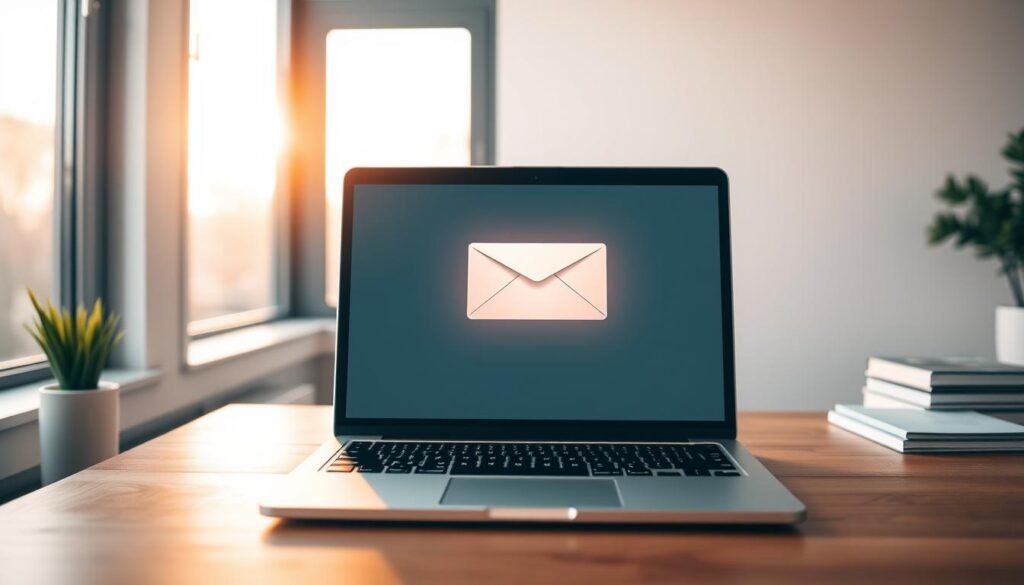Deciding how to schedule emails can change results. You’ll get a concise, data-driven comparison to remove guesswork and boost campaign performance.
Email is one of the highest-ROI channels, often returning many dollars for every dollar spent. Automated and triggered messages typically show higher open rates and click-throughs than static newsletters. This section explains how two delivery methods differ and when each suits your list.
We focus on practical trade-offs: which option preserves a smooth onsite experience, how delivery windows affect interest and visitors, and how to align choices with broader marketing efforts. You’ll also see operational details like per-recipient delivery windows and how mechanics influence engagement.
Key Takeaways
- Compare delivery modes to decide which fits newsletters or automations.
- Optimized sends can lift opens, clicks, and overall performance.
- Understand delivery windows to protect the website experience for visitors.
- Align your list strategy with campaign goals across teams and companies.
- Use data, not guesswork, to schedule announcements and behavior-driven outreach.
Optimize send-time delivery for better email marketing performance in the United States
Sending messages when subscribers are most active can sharply lift engagement and conversion rates. In the U.S., 76% of consumers buy online using a smartphone, so aligning sends to mobile habits matters.
Why send-time optimization matters right now
Two delivery approaches show clear gains. One method delivered a 30.21% open rate and 4.41% CTR versus an average 26.80% open and 1.89% CTR. The other analyzes each recipient’s history to schedule when they are most likely open.
- Mobile-first delivery: Reach readers on the device they use to shop, and ensure the website loads fast.
- Local alignment: Match sends to U.S. time zones and daily routines for better reads and clicks.
- Campaign fit: Use synchronized sends for launches and behavior-based schedules for nurture flows.
| Metric | Fixed local hour | Per-subscriber schedule |
|---|---|---|
| Open rate | 30.21% | Typically higher than average (varies by list) |
| CTR | 4.41% | Higher click propensity when aligned to history |
| Best use case | Flash sales, product launches | Nurture streams, lifecycle emails |
Build tests that vary strategies by segment and measure lifts. That will help you improve performance across inbox, web, and conversion paths.
GetResponse Perfect Timing vs Time Travel: how they work, where they fit, and key differences
Delivery strategy determines whether your message arrives when subscribers are ready. This section explains how each method operates, where to use them, and the practical limits that shape campaign design.
Time Travel: deterministic local delivery
Time Travel sends an email at a fixed local hour for every recipient. It works across newsletters, autoresponders, and automation workflows. Use it when you need synchronized launches or region-specific promotions.
Perfect Timing: adaptive delivery by behavior
Perfect Timing analyzes past engagement and waits up to 23 hours to deliver when each subscriber is most likely open and click. It applies only to a newsletter and increases the chance a message hits a preferred hour.
- Mutual exclusivity: a single newsletter can’t use both methods simultaneously.
- Edge cases: contacts without history default to signup time; imported contacts use the scheduled send.
- Example: John (9–10 a.m.) gets a 9 a.m. send now, Mike (2–3 p.m.) waits 5 hours, Sue (7–8 p.m.) waits 10 hours.
- Analysis: wait 48–96 hours before judging performance to include delayed deliveries.
| Feature | Time Travel | Perfect Timing |
|---|---|---|
| Where available | Newsletters, autoresponders, automation | Newsletters only |
| Delivery window | Fixed local hour | 0–23 hour personalized window |
| Best for | Synchronized launches | Behavior-driven engagement |
Choosing between Perfect Timing and Time Travel based on your goals

Choose the delivery method that maps directly to your campaign goal and audience behavior. Your choice should protect the subscriber experience while improving opens and clicks.
Use Time Travel for synchronized announcements, product launches, and local-time promotions
Time Travel delivers at a specific local hour and works across newsletters, autoresponders, and automation workflows.
Pick it when coordination matters: product launches, press-driven news, or promotions that must land in every inbox at 9 a.m. local.
Use Perfect Timing for behavior-driven engagement and higher opens
Perfect Timing analyzes past activity to send during each subscriber’s predicted best hour. Use it when your priority is deeper engagement and higher click rates.
Newsletter vs automation: align the feature with your program
For recurring newsletter sends, weigh brand cadence against engagement goals. If you need synchronized delivery, choose the local-hour method. If you want to maximize open and click rates for content, the adaptive approach is often the better fit.
- Automation and transactional streams benefit from the local-hour option to keep timing consistent across workflows.
- Segment by intent: use synchronized delivery for flash deals and adaptive delivery for nurture flows.
- Test cohorts and measure which approach advances your email marketing KPIs without harming brand experience.
| Goal | Best fit | Why |
|---|---|---|
| Synchronized launch | Time Travel | Consistent local delivery for urgency |
| Engagement lift | Perfect Timing | Personalized sends based on subscriber preferences |
| Automation streams | Time Travel | Predictable delivery across workflows |
Implementing GetResponse send-time features the right way

Start with a clear plan and shared rules. Enable the adaptive send option when you build a newsletter via Tools > Email Marketing > Create newsletter and toggle it in the Summary step.
Enable feature and set analysis windows
Because delivery may wait up to 23 hours, set stakeholder expectations up front. Review campaign metrics after 48–96 hours so delayed sends are included in your analysis.
Handle new sign-ups and imported contacts
Contacts who signed up themselves get a send at signup time if they lack history. Imported contacts receive the scheduled send instead of adaptive delivery for that email.
Best practices for design, segmentation, and automation
- Mobile-first design: test email and landing pages on device screens and measure website load to reduce friction.
- Segment and tag: use lifecycle and preferences to tailor cadence and add consistent UTMs for clear web and CRM attribution.
- Standardize rules: document when automation uses local-hour delivery versus newsletter-level adaptive sends so ops and marketing stay aligned.
Trust, consent, and data transparency
Strengthen user trust by explaining how you collect personal information and whether any third party may set technologies that collect information. Offer a layered preference center and clear options to allow cookies for targeted advertising.
| Control | What to disclose | Why it matters |
|---|---|---|
| Cookies | Which cookiesalways activethese cookies are essential and which cookies labelthese cookies enable ads | Helps visitors choose and keeps your site work consistent |
| Data sharing | Whether you share personal information with third parties or engage in targeted advertising | Reduces opt-outs and supports compliance |
| Opt-outs | Sale personal data options and right opt controls | Builds trust and protects deliverability |
Conclusion
Your email program improves when you match delivery mechanics to audience behavior. If you need synchronized, local-hour delivery for a coordinated moment, choose Time Travel; it has shown a 30.21% open rate and a 4.41% CTR. If you want individualized engagement gains, use Perfect Timing and evaluate results after the full 48–96 hour delivery window closes.
Anchor your roadmap in tests: compare both approaches to your baseline, track opens, CTR, and downstream conversions, and select the method that lifts overall performance.
Pair any send strategy with clear value props, strong CTAs, mobile-first design, and a fast website to smooth the path from inbox to action. Build internal guardrails so teams can deploy confidently and scale what works for your marketing efforts and companies in the U.S. market.

